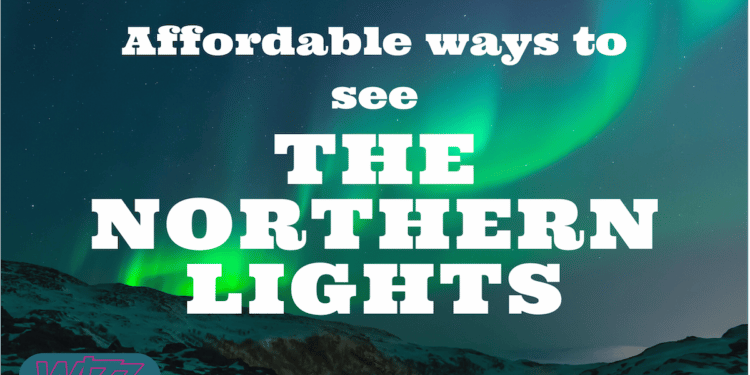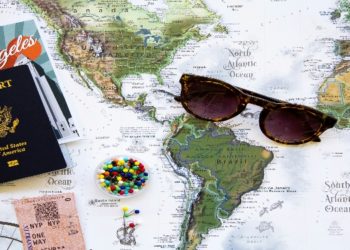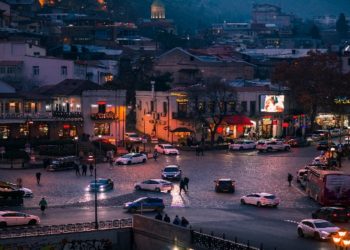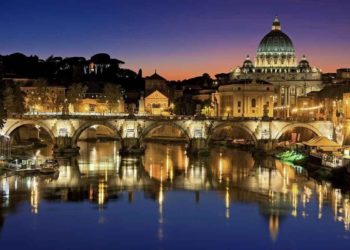Seeing the phenomenathat is the Northern Lights is something that’s on many people’s bucket lists, with Google searches for “northern lights” seeing a 210.7% uplift in the last month. Despite its popularity, it is widely assumed that seeing the northern lights is an expensive and, therefore, inaccessible trip. However, Wizz Air reveals that there are ways to see the Northern Lights inexpensively and advises the best time to visit and how to find affordable flights and accommodation.
Where can I go to see the Northern Lights?
The best places to see the northern lights in Europe are at far northerly latitudes, located in or near the Arctic Circle. Known as the “aurora zone/northern lights belt,” this area includes Northern Sweden and Norway, Iceland and Finland’s northernmost region, Lapland.
Although rare, it is possible to see the northern lights across Northern Scotland, including the Outer Hebrides, the Shetland Islands, and the Isle of Skye – all areas that are remote regions, away from any light pollution. You are most likely to see the northern lights in this part of the world from mid-October to mid-March, however, it must be noted that northern light sightings here are rare and never can be guaranteed.
For the best chance of seeing the phenomena, you should opt for Northern Scandinavia and Iceland. Iceland is particularly advisable as it is the most accessible destination from the UK, with numerous direct flights to the Icelandic capital Reykjavik.
Finding flights
As mentioned, Iceland is undoubtedly the most accessible destination from the UK, which also provides the best chance of seeing the northern lights. While locations such as Northern Scandinavia provide a decent opportunity too, reaching these locations takes a lot of travelling and changes, whereas northern light spots can be reached in just under one hour from Reykjavik city centre. In fact, you could even plan a short 10-minute walk away from the city centre to the Sun Voyager sculpture. Created by Jón Gunnar Árnason, created as an ode to the sun in the shape of an old Viking boat.
In addition to being the most convenient place to visit, flights to Iceland are also affordable throughout the whole year. However, if you opt for flights in the “low season” which is from November – March, then flights are even cheaper than average, and this is the optimum time to spot the northern lights and beat the crowds!
Finding accommodation
Accommodation is usually thought to be the most expensive part of a trip; however, this does not need to be the case. Hostels are the cheapest form of accommodation, which offer near enough the same facilities as an average hotel does. Hostels are particularly great if you are a solo traveller as they tend to encourage social gatherings, and the people running the hostels will have a vast amount of local knowledge. In addition, most travellers are travelling on a tight budget, so the hostel staff will know all the tips on helping your money go further.
If, however, the thought of sharing a dorm with up to 30 other travellers may fill you with dread then many hotels offer private rooms at a cheaper rate than a hotel, so you still have the benefits of a social environment while still maintaining your privacy.
When is the best time to see the Northern Lights?
As you need pretty much total darkness to see the northern lights, visiting the Aurora Zone during spring/summer is not advisable. Iceland, in particular, boasts up to 22 hours of sunlight in the peak of summer which means the chance of seeing the northern lights are minimal. Instead, the best time to visit is between late September to late March. During this period, northern Scandinavia and Iceland are dark from the early afternoon, and the further north you go, the darker it gets.
You should also time your trip with a new moon. A full moon can affect your viewing experience and throws out enough light pollution which means only the strongest and brightest lights are visible.
Finally, the Northern Lights are most likely to be seen from 10 pm to 2 am, although it has been known for the auroras to start as early as 7 pm.













































































